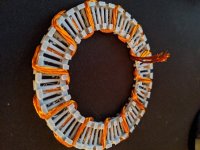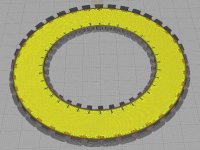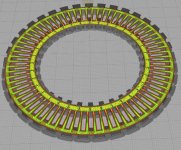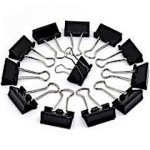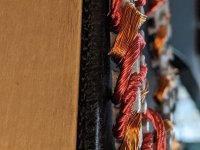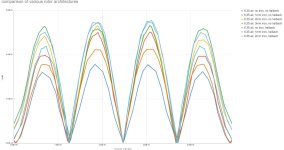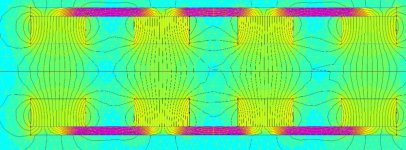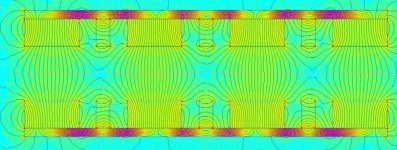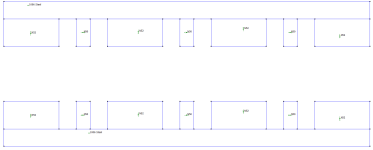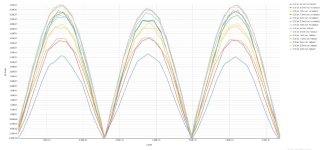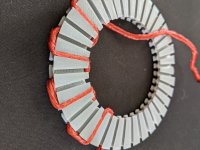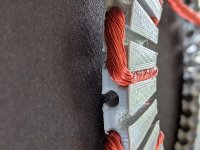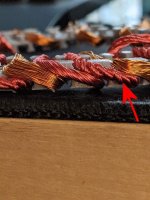HalbachHero said:
Now I am very curious how close it would have to be to prevent flux leaking, and seeing the difference between the back iron and not is cool, though it complicates how to make this with a printer a bit. I also wonder if on the inner diameter since its basically touching, if flux isn't leaked. Also, what airgap did you use in your simulation? was that with the 11mm?
Sorry I just checked and it was 11mm but I messed up the magnet dimensions (not familiar enough to imperial units) and looking back at it the insert magnet orientation isn't right on top row (leeking more on this side), sorry I shouldn't do this stuff so late at night

I redid the sim to look at what happen in the center :

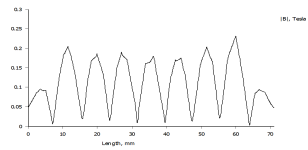
At 11mm the flux is very weak I think, (best case since all magnet are close) it isn't linking well from the two sides. For comparison here is the flux i'm getting with 40x20x5 mm N37 and back iron in my multistator design :


(also the coils are at 100/-50/-50 A so it add a little stator flux to the mix but it's not much)
I haven't said that but the plot is the flux at mid airgap (along red line), the value are quite similar to my messed up sims were magnet were 6.4mm thick and airgap at 11mm.
It's not a great news for a lower KV but as I said before the optimal point is rougthly at 2 time magnet thickness, so for 1/8" thick magnet it would mean a 6.35mm airgap (if i haven't miss my conversion again).
At those thickness it is really hard to wind for sure ..
So I guess the thinner you can get it the better.
mxlemming, as pointed by HalbachHero FEMM is a free 2D FEM analysis software for magnetic design, it's really to use and has great tutorials online, you can even get Torque value and get KV from that if you model the coils also.
HalbachHero said:
I like where this is going. Its surprisingly solid too with these current settings (3 walls, 3 top and bottom layers, 50% infill, 0.2mm layer height, no supports, and a 4 line thick brim)
Your 3D printer is working hard for sure ! Another beatiful stator incomming. :thumb:
I was just asking myself, why the big fillet on on side of the tooth ? you might stuff another turn in there I think.








